#Apollo Soyuz Test Project
Text

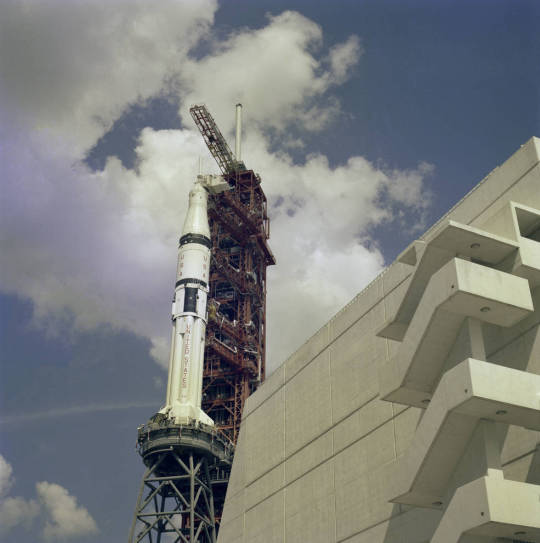
"The Saturn IB space vehicle for the Apollo-Soyuz Test Project mission, with its launch umbilical tower, rides atop a huge crawler-transporter as it moves slowly away from the Vehicle Assembly Building on its 4.24-mile journey to Pad B, Launch Complex 39, at NASA's Kennedy Space Center."
Date: March 24, 1975
NASA ID: S75-24007, S75-24009
#Apollo–Soyuz#Apollo Soyuz Test Project#ASTP#CSM-111#Apollo Block II CSM#Docking Module#Saturn IB#SA-210#Rocket#NASA#Apollo Program#Apollo Applications Program#Vertical Assembly Building#VAB#Kennedy Space Center#KSC#Florida#rollout#March#1975#my post
99 notes
·
View notes
Text

entomologists of tumblr can you confirm?
9 notes
·
View notes
Text
wow i love doing research <3
#finally getting started on this project + i get to choose the topic#i'm doing the apollo soyuz test project and it's so interesting i love cold war politics they're so fascinating#leon talks
1 note
·
View note
Text

Apollo-Soyuz Test Project (1975): Astronaut Alfred F. Jones embraces cosmonaut Ivan Braginsky in the Soyuz spacecraft.
#rusame#hetalia#amerus#alfred f jones#ivan braginsky#space race gays#the Apollo Soyuz mission is my all-time favorite space mission I could ramble about it for ages#I had so much fun drawing this#based on a photo of deke slayton and aleksey leonov. it’s very silly look it up#my art
492 notes
·
View notes
Text

March 1, 1924... remembering Donald “Deke” Slayton
Would be 100th birthday for USAF pilot/astronaut Donald "Deke Slayton, selected a NASA astronaut in 1959, USAF Captain Donald Slayton became one of the original Mercury 7 astronauts. However centrifuge training electrocardiodiagrams pointed out he had a heart condition, so he became chief of the astronaut office, deciding on crew planning for the Gemini and Apollo programs.
In March 1972, NASA announced that Slayton had returned to flight status and in this way he became DMP - Docking Module Pilot for the historic Apollo-Soyuz Test Project in July 1975.
Wristwatch-wise, Donald Slayton wore a lot of watches (Accutron, Breitling, Bulova, Omega,...) and he was the first of the NASA astronauts to be spotted wearing an Omega Speedmaster CK2998-4 in December 1962. By June 1963, three NASA astronauts (Donald Slayton, Walter Schirra & Leroy Cooper) had a personal Speedmaster CK2298. Although bezelless since June 1963, Slayton kept wearing his Speedmaster CK2298 untill June 1965.
Note in this 1991 portrait, Donald Slayton wore his Gold "Apollo 11" tribute Omega Speedmaster BA 145.022-69 n° 27 chronograph on yellow Gold bracelet awarded in November 1969.
(Photo: Pam Francis portraits)
#Apollo#Astronaut#321#chronograph#Speedmaster#Moonwatch#MoonwatchUniverse#NASA#military#montres#uhren#pilot watch#test pilot#Speedytuesday#Omega#spaceflight#Zulu time
27 notes
·
View notes
Text
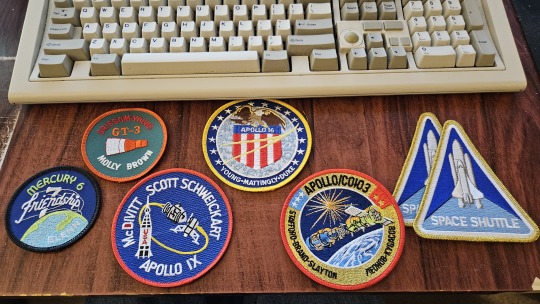
Space program mission patches!
Mercury 6 - Friendship 7
Gemini GT-3 - "Molly Brown"
Apollo 9 - Gumdrop/Spider
Apollo 16 - Orion/Casper
Apollo Soyuz Test Project
Space Shuttle x2
26 notes
·
View notes
Text
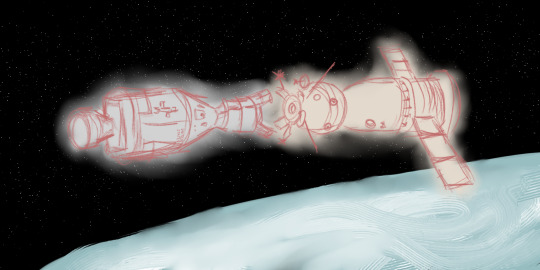
Day 320
for my archiving class project we're dealing with some NASA files and one of the things is about the Apollo-Soyuz Test Project which was the first international human spaceflight. The U.S.'s Apollo and the Soviet Union's Soyuz met in orbit and docked with each other and were able to board each others vessels while in space and it was the first time something like that was done and the first time the two nations cooperated with each other like that
anyways i felt like trying to draw it because like what if we were spaceships from enemy countries and we held hands in space
Reference image under the cut
https://www.nasa.gov/image-detail/amf-73a-s1905b/
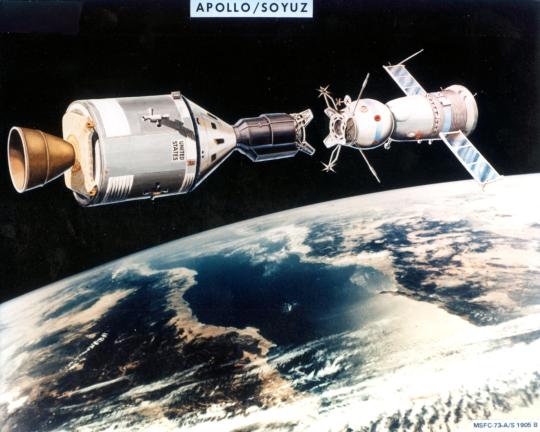
#this was supposed to be a quick sketch and then i ended up adding random colors and shit lol#mostly i wanted to just practice imitating an image by just looking at it#adad#ograt
7 notes
·
View notes
Text

ESA's solar eclipse maker, Proba-3
Hundreds of millions of people will witness next week's total solar eclipse across North America, and solar physicists from around the globe are flocking to join them. Eclipses offer a brief glimpse of the sun's ghostly surrounding atmosphere—the solar corona—normally kept invisible by the sun's sheer glare. But the corona will soon be opened up for more sustained study: today in Belgium ESA has unveiled the pair of spacecraft making up its new Proba-3 mission, planned to produce orbital solar eclipse events on demand.
Proba-3's Occulter spacecraft will fly around 150 m away from the second Coronagraph spacecraft, shown to media today at the Redwire Space facility in Kruibeke, Belgium, where they are undergoing pre-flight testing. The pair will line up with the sun so precisely that the Occulter casts a shadow onto the face of the Coronagraph, blanking out the sun to reveal the corona.
"The two spacecraft will act as if they are one enormous 150-m long instrument," explains Dietmar Pilz, ESA Director of Technology, Engineering and Quality. "Achieving this will be extremely technical challenging however, because the tiniest bit of misalignment and it won't work. The development process has been correspondingly long—undertaken by a consortium of smaller ESA Member States led by Spain and Belgium—so I am very pleased to see Proba-3 here today, being prepared for launch."
Producing artificial solar eclipses in orbit
The underlying idea is not new: a cylindrical Apollo capsule attempted to do the same for a Soviet Soyuz spacecraft during the Apollo-Soyuz Test Project in 1975. But the aim with Proba-3 is to produce these artificial eclipses routinely through precise formation flying, for up to six hours at a time per 19 hour 36 minute orbit.
Solar eclipses occur due to a remarkable cosmic coincidence: the sun is 400 times bigger than Earth's moon, but it is also precisely 400 times further away. This means when the two bodies are aligned precisely in space, the moon covers the sun's fiery face, revealing the solar corona, extending millions of kilometers from our parent star.
Rarely seen region of our solar system
This rarely seen region of our solar system is of interest both scientifically and practically: a million degrees warmer than the surface of the sun beneath it, the corona gives rise to the solar wind and space weather, along with violent ejections known as "coronal mass ejections" that drive space weather and solar storms, potentially impacting both satellites in orbit and terrestrial power and communications networks.
To see more of the corona, specialized telescopes on the ground and in orbit called "coronagraphs" can incorporate "occulting disks"—carefully engineered shields to cover the sun within their field of view, mimicking a solar eclipse. But their effectiveness is limited by a phenomenon called "diffraction," where stray light spills over the edges of coronagraphs. The way to minimize this effect is to move the occulting disk much further apart from the observing coronagraph—but practical limits on the size of spacecraft rendered that solution impractical for space.
Performing like a single rigid spacecraft
Until now, that is. By flying the two spacecraft in precise formation down to millimeter accuracy, Proba-3's main ASPIICS (Association of Spacecraft for Polarimetric and Imaging Investigation of the Corona of the sun) instrument will yield data as if it were aboard a single rigid spacecraft, opening up a previously elusive region of study between 3 and 1.1 solar radii out from the sun.
This accuracy will be obtained by combining a suite of progressively more precise positioning technologies: satellite navigation; radio-based inter-satellite links, visible-light cameras homing in on LEDs and finally a laser beam reflected between spacecraft. Proba-3's second instrument is a radiometer measuring the sun's total energy output, important for climate modeling.
Fully autonomous formation flying
The formation flying will take place on a fully autonomous basis, towards the top of each 60,000 km altitude orbit, where gravitational, atmospheric and magnetic perturbations are minimized. The rest of the time the pair will spend the rest of their orbit in passive safe drifting.
As with all of ESA's Proba family of technology demonstration missions, the proof of success with be in the quality of the science data produced.
Enabling new types of space missions
Successfully achieving precise formation flying would enable a whole new era for science and applications. Missions could be flown that are much larger than any single spacecraft—such as giant in-orbit radio and optical interferometry arrays—while precise orbital rendezvous would make in-orbit satellite servicing feasible, extending the lifetime of space infrastructure.
Meanwhile members of Proba-3's science team are taking advantage of the North American total solar eclipse to test out hardware designed for the mission: polarizing filter wheels used in ASPIICS, as well as an alternative LED technology.
IMAGE....Due to launch together in 2024, the two satellites making up Proba-3 will fly in precise formation to form an external coronagraph in space, one satellite eclipsing the sun to allow the second to study the otherwise invisible solar corona. Credit: ESA-P. Carril
6 notes
·
View notes
Text
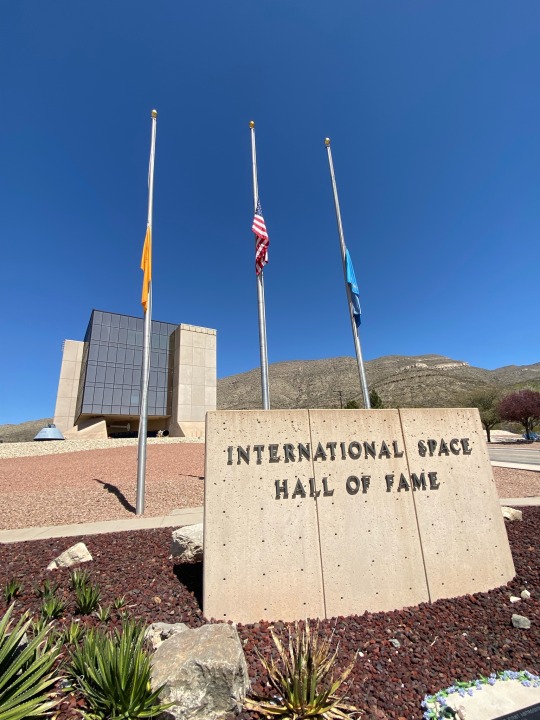





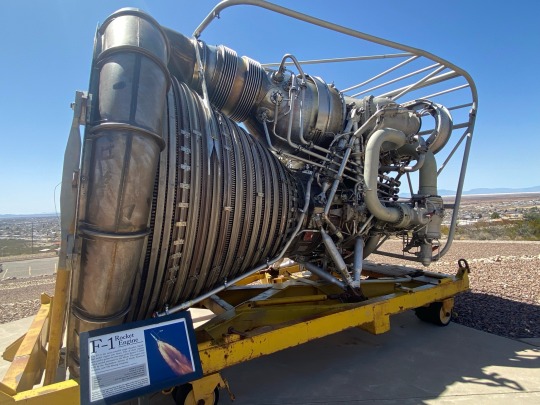

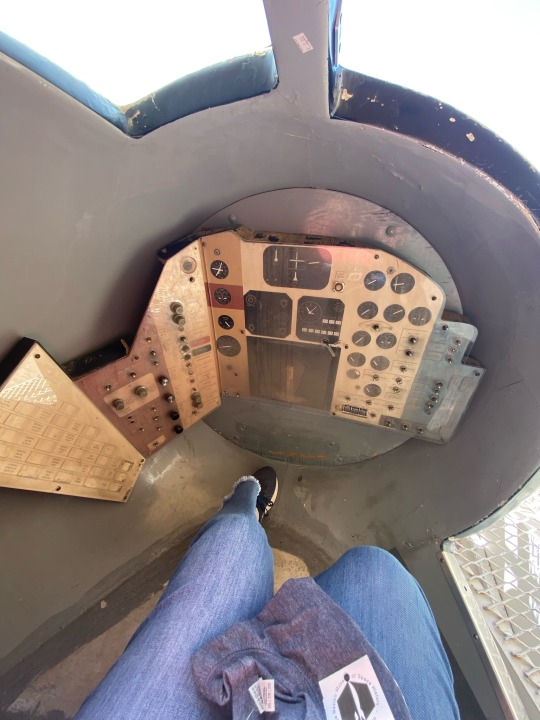

I’ll have to do 3 parts - Here is Part one.
Part two of the tour is below:
The entrance photo with the Hall of Fame sign is where HAM is buried. There are folks that put flowers on his grave, which was nice. (You can see the marker in the bottom right corner.)
Here are some of the vehicles in the John. P. Stapp Air and Space Park.
Little Joe is the third photo down. It is the most famous of the rockets and is used in their logos.
IGOR, the observatory, was used to check flight trajectories and rockets from testing areas.
The sled track near the bottom was used to test G-Force as well as seatbelts in its day. (They went in great detail about G-LOC and done of the odd results from these tests. I think one was how a car seat flew off the track… no one in it though).
The Mercury test capsule - last two photos, I thought best.
Not only did it have facsimiles of the Mercury 7 signatures and flights they flew (Deke Slayton eventually flew in the Apollo-Soyuz project), but it was one you could go inside.
You can see a bit of my jeans and tennis shoes in the mock-up.
To put in perspective how tight this is: I’m 5’8” and my back is firmly against the back wall.
•••••
Next time a couple of more photos, their souvenir shirts and a few other memories not pictured, such as childhood memory spots.
Hope you enjoyed part 2.
10 notes
·
View notes
Text
You know what’s fun? The Apollo-Soyuz Test Project.
0 notes
Link
In December 1973, Skylab 4 astronauts Gerald P. Carr, Edward G. Gibson, and William R. Pogue passed the one-month mark of the third and final mission aboard the Skylab space station. Launching on Nov. 16, they began a planned 56-day flight that mission managers fully expected to extend to 84 days. They continued the science program begun by the previous two Skylab crews, including biomedical studies on the effects of long-duration space flight on the human body, Earth observations using the Earth Resources Experiment Package (EREP), and solar observations with instruments mounted on the Apollo Telescope Mount (ATM). To study newly discovered Comet Kohoutek, scientists added cometary observations to the crew’s already busy schedule, including adding a far ultraviolet camera to Skylab’s instrument suite. Left: Image of a massive solar flare taken by one of the Apollo Telescope Mount instruments. Middle: Earth Resources Experiment Package infrared photograph of Florida’s central Atlantic coast including NASA’s Kennedy Space Center. Right: Gerald P. Carr monitors Edward G. Gibson during a lower body negative pressure test of his cardiovascular system. On Dec. 13, the mission’s 28th day, program officials assessed the astronauts’ performance and the status of the station and fully expected that they could complete the nominal 56-day mission and most likely the full 84 days. Despite being overworked and often behind the timeline, Carr, Gibson, and Pogue had already accomplished 84 hours of ATM solar observations, 12 EREP passes, 80 photographic and visual Earth observations, all of the scheduled medical experiments, as well as numerous other activities such as student experiments, and science demonstrations. The astronaut’s major concern centered around the timelining process that had not given them time to adjust to their new environment and did not consider their on-orbit daily routine. Despite the crew sending taped verbal messages to the ground asking for help in fixing these issues, the problem persisted. Skylab 4 Lead Flight Director Neil B. Hutchinson later admitted that the ground team learned many lessons about timelining long duration missions during the first few weeks of Skylab 4. Left: Soyuz 13 cosmonauts Pyotr I. Klimuk, left, and Valentin V. Lebedev during their mission. Middle: Model of Soyuz 13, showing the replacement of the forward docking system with the Orion-2 telescope inside its housing. Right: Preflight view of the Orion-2 instrument package. Image credits: courtesy of Roscosmos. On Dec. 18, Carr, Gibson, and Pogue received visitors in low Earth orbit. On their 33rd day aboard the Skylab space station, the Soviet Union launched Soyuz 13, with Pyotr I. Klimuk and Valentin V. Lebedev aboard. Although the event marked the first time in history that American astronauts and Soviet cosmonauts orbited the Earth at the same time, the two crews neither met nor communicated with each other, traveling in very different orbits with different missions. The Soyuz 13 cosmonauts operated a scientific package called Orion-2, comprised of three ultraviolet spectrographs for stellar observations and an X-ray telescope to image the Sun. Soviet engineers modified the orbital compartment of the Soyuz, removing its docking apparatus to accommodate the Orion-2 instruments. On Dec. 26, the cosmonauts landed in Kazakhstan in the middle of a snowstorm. The success of Soyuz 13 gave the Soviets and their American counterparts confidence that the spacecraft, modified after the Soyuz 11 accident, would be safe for the Apollo-Soyuz Test Project (ASTP), a joint mission agreed to in May 1972 and planned for July 1975. Left: Gerald P. Carr flying the Astronaut Maneuvering Unit. Middle: A far ultraviolet image of Comet Kohoutek. Right: William R. Pogue at the controls of the Apollo Telescope Mount. Carr, Gibson, and Pogue increased their focus on observing Comet Kohoutek as it neared perihelion, or its closest approach to the Sun, on Dec. 28. At that point, Skylab’s solar telescopes could observe the comet better than any ground-based instruments. In addition to dedicated observations during two spacewalks, the astronauts continued to monitor the comet well into January as it headed rapidly away from the Sun, to return in maybe 75,000 years. The astronauts continued their medical studies and Earth observations as well as tests inside the large dome of the workshop of the Astronaut Maneuvering Unit, a precursor of the Manned Maneuvering Unit used during the space shuttle program to retrieve satellites. Left: Skylab 4 astronauts Gerald P. Carr, left, Edward G. Gibson, and William R. Pogue build and decorate their makeshift Christmas tree. Middle: Carr, left, Gibson, and Pogue’s Christmas stockings. Right: Gibson, left, Carr, and Pogue open Christmas presents. For only the second time, American astronauts celebrated Christmas in space. On the first occasion five years earlier, Apollo 8 astronauts observed Christmas as the first crew to orbit the Moon. In the more spacious Skylab workshop, and with more time to prepare, Carr, Gibson, and Pogue built a makeshift Christmas tree by repurposing food cans, used colored decals as decorations, and topped it with a cardboard cutout in the shape of a comet. They hung stockings on the wall beneath the tree and sent holiday greetings to people on the ground. Skylab 4 astronaut Gerald P. Carr in three scenes from the mission’s second spacewalk, with tasks including changing film cassettes in the Apollo Telescope Mount (ATM), repairing one of the ATM instruments, and observing Comet Kohoutek. The main task on Christmas Day involved the mission’s second spacewalk. Carr and Pogue spent 7 hours and 1 minute outside the space station, then a record for Earth orbital spacewalks. In addition to replacing film cartridges in the ATM, they repaired a stuck filter wheel on an ATM instrument, and used an ultraviolet camera to photograph Comet Kohoutek. Once back inside the station, they enjoyed a Christmas dinner complete with fruitcake, talked to their families, and opened presents from the astronauts’ wives that the ground crew at NASA’s Kennedy Space Center in Florida had hidden in lockers in the Command Module. Left: In the Mission Control Center at NASA’s Johnson Space Center in Houston, Professor Luboš Kohoutek talks with the Skylab 4 crew. Middle: Astronauts Gerald P. Carr, left, Edward G. Gibson, and William R. Pogue during the videoconference with Professor Kohoutek. Right: Gibson during the third Skylab 4 spacewalk, exclusively dedicated to study Comet Kohoutek. On Dec. 28, the day the astronauts reached the halfway point of their 84-day mission, they held an 11-minute video conference with the comet’s discoverer, Czech astronomer Luboš Kohoutek during his visit to the Mission Control Center at NASA’s Johnson Space Center (JSC) in Houston. The next day, Carr and Gibson completed the mission’s third spacewalk lasting 3 hours 29 minutes and dedicated to observing and photographing the comet. Although the crew’s work schedule had improved over the previous few weeks, the astronauts still found it difficult to accomplish the timeline the planners laid out for them. To rectify the problem, Carr requested a dedicated space to ground voice conference so the issues could be aired and rectified. Following what Carr later called the first sensitivity session in space on Dec. 30, planners understood the astronauts’ constraints and the crew worked more effectively the second half of the mission. Capsule communicator Richard H. Truly mentioned that JSC Director Christopher C. Kraft and Flight Crew Operations Chief Donald K. “Deke” Slayton had listened to the conversation and agreed that the teams “made about a million bucks” during the 55-minute conversation. The lessons learned about scheduling activities for long-duration spaceflights proved useful to later programs such as Shuttle/Mir and the International Space Station. Left: Williams R. Pogue, left, and Gerald P. Carr place bags into the trash airlock. Middle: Edward G. Gibson floats into the large volume of the orbital workshop from airlock module. Right: Carr and Pogue demonstrate weightlessness. On Jan. 1, 1974, Carr, Gibson, and Pogue celebrated the coming of the new year, the first space crew to observe that holiday along with Thanksgiving and Christmas. An American astronaut would not repeat that for 23 years until John E. Blaha during his four-month stay aboard the Mir space station in 1996-7. On Jan. 10, Carr, Gibson, and Pogue enjoyed a day off, meaning planners only scheduled one third of their time, freeing them to pursue activities of their own choosing. On the ground, mission managers held the 56-day review of the mission and based on the crew’s health and the station’s condition declared the mission go for 84 days, although strictly speaking, managers and flight surgeons approved the mission’s extension one week at a time. For more insight into the Skylab 4 mission, read Carr’s, Gibson’s, and Pogue’s oral histories with the JSC History Office. To be continued … With special thanks to Ed Hengeveld for his expert contributions on Skylab imagery. Share Details Last Updated Dec 18, 2023 Related TermsNASA HistorySkylab Explore More 7 min read 120 Years Ago: The First Powered Flight at Kitty Hawk Article 4 days ago 3 min read Contributions of the DC-8 to Earth System Science at NASA: A Workshop Article 7 days ago 3 min read 25 Years Ago: NASA, Partners Begin Space Station Assembly Article 2 weeks ago
0 notes
Text

Workers in the VAB replace the fins on the ASTP Saturn IB’s (SA-210) first stage.
Date: March 11, 1975
NASA ID: S75-23780
#Apollo–Soyuz#Apollo Soyuz Test Project#ASTP#CSM-111#Apollo Block II CSM#Docking Module#Saturn IB#SA-210#Rocket#NASA#Apollo Program#Apollo Applications Program#stacking#Vertical Assembly Building#VAB#Kennedy Space Center#KSC#Florida#March#1975#my post
62 notes
·
View notes
Text

Liftoff of the Saturn IB launch vehicle, for the Apollo/Soyuz Test Project mission, July 15th, 1975
0 notes
Text
Events 7.17 (after 1900)
1901 – Liner Deutschland sets east to west transatlantic record of five days, eleven hours and five minutes.
1902 – Willis Carrier creates the first air conditioner in Buffalo, New York.
1917 – King George V issues a Proclamation stating that the male line descendants of the British Royal Family will bear the surname Windsor.
1918 – Tsar Nicholas II of Russia and his immediate family and retainers are executed by Bolshevik Chekists at the Ipatiev House in Yekaterinburg, Russia.
1918 – The RMS Carpathia, the ship that rescued the 705 survivors from the RMS Titanic, is sunk off Ireland by the German SM U-55; five lives are lost.
1919 – The form of government in the Republic of Finland is officially confirmed. For this reason, July 17 is known as the Day of Democracy (Kansanvallan päivä) in Finland.
1936 – Spanish Civil War: An Armed Forces rebellion against the recently elected leftist Popular Front government of Spain starts the civil war.
1938 – Douglas Corrigan takes off from Brooklyn to fly the "wrong way" to Ireland and becomes known as "Wrong Way" Corrigan.
1944 – Port Chicago disaster: Near the San Francisco Bay, two ships laden with ammunition for the war explode in Port Chicago, California, killing 320.
1944 – World War II: At Sainte-Foy-de-Montgommery in Normandy Field Marshal Erwin Rommel is seriously injured by allied aircraft while returning to his headquarters.
1945 – World War II: The main three leaders of the Allied nations, Winston Churchill, Harry S. Truman and Joseph Stalin, meet in the German city of Potsdam to decide the future of a defeated Germany.
1953 – The largest number of United States midshipman casualties in a single event results from an aircraft crash in Florida, killing 44.
1955 – Disneyland is dedicated and opened by Walt Disney in Anaheim, California.
1968 – Abdul Rahman Arif is overthrown and the Ba'ath Party is installed as the governing power in Iraq with Ahmed Hassan al-Bakr as the new Iraqi President.
1973 – King Mohammed Zahir Shah of Afghanistan, while having surgery in Italy, is deposed by his cousin Mohammed Daoud Khan.
1975 – Apollo–Soyuz Test Project: An American Apollo and a Soviet Soyuz spacecraft dock with each other in orbit marking the first such link-up between spacecraft from the two nations.
1976 – East Timor is annexed and becomes the 27th province of Indonesia.
1976 – The opening of the Summer Olympics in Montreal is marred by 25 African teams boycotting the games because of New Zealand's participation. Contrary to rulings by other international sports organizations, the IOC had declined to exclude New Zealand because of their participation in South African sporting events during apartheid.
1984 – The national drinking age in the United States was changed from 18 to 21.
1985 – Founding of the EUREKA Network by former head of states François Mitterrand (France) and Helmut Kohl (Germany).
1989 – First flight of the B-2 Spirit Stealth Bomber.
1989 – Holy See–Poland relations are restored.
1998 – The 7.0 Mw Papua New Guinea earthquake triggers a tsunami that destroys ten villages in Papua New Guinea, killing up to 2,700 people, and leaving several thousand injured.
1998 – A diplomatic conference adopts the Rome Statute of the International Criminal Court, establishing the permanent international court in The Hague, to prosecute individuals for genocide, crimes against humanity, war crimes, and the crime of aggression.
2006 – The 7.7 Mw Pangandaran tsunami earthquake severely affects the Indonesian island of Java, killing 668 people, and leaving more than 9,000 injured.
2007 – TAM Airlines Flight 3054, an Airbus A320, crashes into a warehouse after landing too fast and missing the end of the São Paulo–Congonhas Airport runway, killing 199 people.
2014 – Malaysia Airlines Flight 17, a Boeing 777, crashes near the border of Ukraine and Russia after being shot down. All 298 people on board are killed.
2018 – Scott S. Sheppard announces that his team has discovered a dozen irregular moons of Jupiter.
0 notes
Text
1975- Apollo–Soyuz


Apollo–Soyuz Test Project: An American Apollo and a Soviet Soyuz spacecraft dock with each other in orbit marking the first such link-up between spacecraft from the two nations.
0 notes
Text

60 years ago… Deke Slayton
In November 1963, Donald "Deke" Slayton resigned from his commission in the US Air Force after he was permanently disqualified from flying in space and became a civilian executive for NASA, becoming director of Flight Crew Operations in early 1966.
On March 13, 1972, after a medications treatment, NASA announced that Deke Slayton had returned to flight status. In July 1975, Slayton flew as Docking Module Pilot during the historic Apollo-Soyuz Test Project mission.
Photos show that Slayton had been wearing Accutron & Accutron “Astronaut” pilot watches between 1962 and 1973.
(Photo: NASA)
#Aviator#Astronaut#Accutron#pilot watch#GMT#MoonwatchUniverse#NASA#military#montres#uhren#spaceflight#tuningfork#Apollo-Soyuz#test pilot#wrist watch#Zulu time#USAF
50 notes
·
View notes